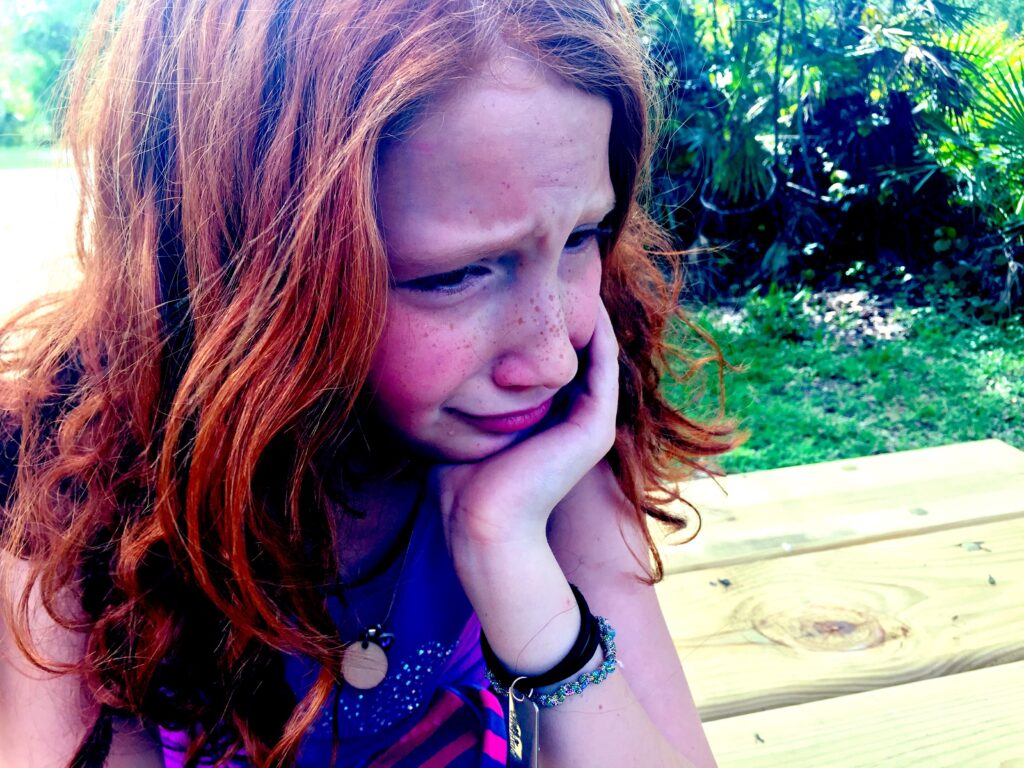I first experienced this phenomenon with my oldest son. He went to school just fine, and his teachers every year all reported to me how wonderful he was in class, but when he got home each day, the irritability and meltdowns would impact our family for the rest of the afternoon and evening. Any little thing would set him off, and we walked around on eggshells trying not to light the fuse.
I have come to understand that this phenomenon is real, has a name, and happens to a lot of kids. It is called after-school restraint collapse. It occurs when a child who wants to please or is holding in and internalizing anxiety or sensory needs during the day, gets home and needs to let out all that built-up stress. Kids don’t typically have the language for expressing this and demonstrate what looks like behavior or anger issues. A very difficult part of restraint collapse is that it is taken out on the people that the child loves the most and feels safest around, and that can make us as parents (or their siblings) feel like human punching bags.
I think the important strategy in many instances is to identify for the child the actual thing that is happening to them. In this case, after-school restraint collapse and what it is. Once you put a real name to the problem, it is much easier to come up with solutions. In reality, kids who experience after-school restraint collapse may end up being punished, rather than understood. However, no one should be in the role of someone’s human garbage disposal, so we need to brainstorm acceptable ways to decompress and discharge all of the stress the child has been holding in all day.
This can be different for individual kids. Some might need to be left completely alone (even not talking to them) for a time after they are picked up or get off the bus. Some might need a snack, be allowed to watch a video or play a game, or get outside to play before any attempts at homework or engaging the child. The best way to find out what will work for your child is to ask your child what they think might work. This is best done when a child is the most relaxed and in a good head space. This conversation might go something like this:
“I notice or I’m concerned that after-school time is difficult for our family. It has to be hard to be in school all day doing everything that you need to do (focusing, learning, dealing with sensory overload, etc.) When you get home and all that “stuff” is done, you need to relax, but sometimes you don’t feel you get to do that and we all get really frustrated and grumpy with each other. This is an actual thing called after-school restraint collapse and I need us to work together to make after-school time better for you and for all of us. What do you think might work to help you relax after school?” Then you might present some of the ideas above and ask the child for their ideas.
Usually, even just identifying the problem, takes us to a better place with greater understanding and the ability to cope better. My son, who is now 35, still has this issue in the form of after-work restraint collapse. His boss and the customers he serves still see the side of him his teachers used to see all day, but when he gets home from work, he needs at least an hour to himself with no one talking to him to decompress.
So, if you are an educator or another adult that works with children, and think a child is doing wonderfully at school if a parent reports that after school is very different, you can do the child and their parents an immense service just by being aware that on the inside, they are wrapped up tight to be able to make it through their day in that wonderful way.









Leave a Reply